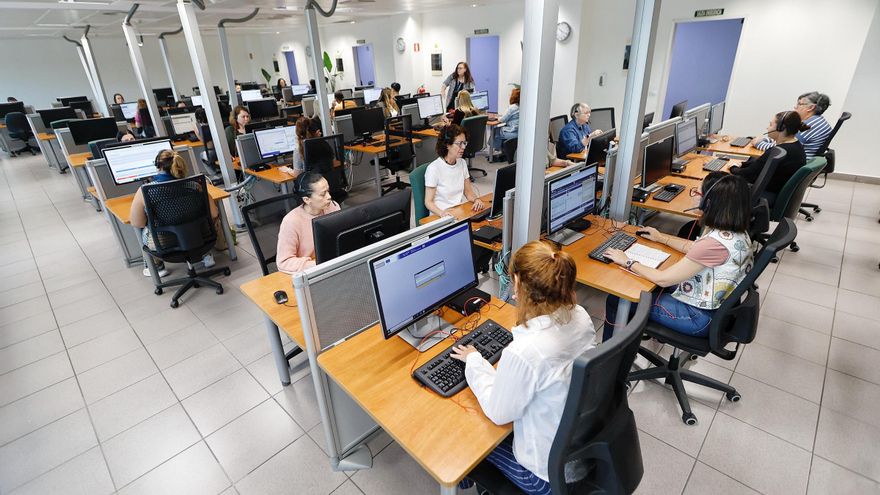
“We are more reliant on telecommunications than we realised.” This is the primary conclusion drawn by the General Director of Digital Transformation of Public Services of the Government of the Canary Islands, Guadalupe González Taño following the communication blackout experienced by the isolated archipelago on April 28, which was a collateral effect of the Blackout in mainland Spain.
“Our telecommunications framework is less autonomous than we assumed, and we must enhance it to prevent such occurrences, as communications are as vital as water and electricity,” urged González Taño.
As a direct impact, the public tender for renewing communication services in the Canary Islands, currently operated by Telefónica, has been “put on hold” to incorporate “new clauses that ensure our emergency services remain operational and that we are not completely cut off from the outside world.”
Simultaneously, as declared by President Fernando Clavijo during last Tuesday’s parliamentary session, the Government of the Canary Islands is gathering information from various operators to devise a ‘Plan B’ that mitigates the risk of a future widespread power outage in Andalusia, where all connection nodes to the islands are situated, with the potential to affect 100% of the Canary Islands and mobile communications eight hours later, including critical services such as 112 and 012.
González Taño asserts that “communications are as essential as electricity and water.”
The Canary Islands connect to the mainland via Telefónica, utilising three submarine cables. However, reports suggest that just one of these cables is adequate to maintain the service. Additionally, there are ‘moorings’ between Conil and Chipiona (Cádiz) alongside Gran Canaria (Altavista and Tarahales) and Tenerife (Candelaria), which are divided into five diverse routes linked to the central hub in Madrid. The ‘zero’ island situation arose due to the structure of these routes, which contain batteries providing energy for only six hours, while the blackout lasted nine hours.
Consequently, the Canarian government is prepared to review all reports and is considering multiple alternative routes: connecting the Canary Islands via satellite, establishing a robust cable from the American continent, and even if one company wins the bid, including others for support. As they say in football terminology, ensuring that all those not started are ready on the bench, in case they need to jump into the game.
‘Web’ of Cables
In addition to the connection offered by the Spanish telecommunications multinational, there exists a ‘web’ of underwater connections that proved ineffective as safeguards when the communication devices of both citizens and businesses lost signal. One of the proposed solutions is to engage an operator that remained operational during the incident, as happened with the French Vodafone.
This ‘web’ involves Canalink – part of Cabildo Tenerife – which maintains a dual cable system linking Tenerife and Gran Canaria with Cádiz; one of these cables has a branch that connects to Morocco. Moreover, Tenerife is linked to the ACE System (Africa Coast to Europe) – a consortium involving Orange and Canalink – and Gran Canaria connects to the WACS (West African System Cable), in collaboration with 2AFRICA SYSTEM, driven by Vodafone and Canalink.
All these companies and consortiums are engaged in modernisation and enhancement projects for their connection infrastructures. Tenerife and La Palma are included among the connections planned by Ellalink, a submarine fibre optic cable linking Europe and Latin America since 2021 and which, by the end of 2022, received a subsidy of 13.7 million euros from the European Commission (CE). Its completion is anticipated within this year.
Consortiums such as Canalink, ACE, WACS, 2Africa, and Ellalink are integral to the submarine cabling landscape of the archipelago.
Additionally, at the beginning of 2023, the Institute of Astrophysics of the Canary Islands (IAC) entered into a contract with Telefónica to execute the project ‘Redundancy of the Maritime Optical Network of Red Iris’, which will establish a new connection between the observatories in La Palma and Tenerife, anticipated to be completed by the end of 2025.
Furthermore, Canalink received 23 million euros for a connection project between Gran Canaria, Fuerteventura, and Lanzarote, expected to be finished by 2026, the same year a connection between Tenerife and El Hierro should be finalised.
By the end of 2024, Telefónica was allocated 6.6 million euros from the Ministry for Digital Transformation and Public Function led by Sara Aagesen, to replace the Pencan 7 with a new cable, termed Pencan-X. This cable aims to replace one of the three existing underwater routes between the archipelago and the mainland while also offering greater transmission capacity and the capability to provide fibre services, accommodating the rising connectivity demands from businesses, public administrations, and residents. According to the company, Pencan-X will significantly increase the available capacity and will enhance its digital interconnection with all the countries in continental Europe.
Timeline of the Incident Repair
12:33-20:15: Identification of the fallen central systems by network managers, isolating each transport route.
19:00-23:00: Prioritisation by electric distributors aimed at restoring routes and connectivity.
20:30: Dispatch of specialised technicians to the submarine cable stations at Chipiona and Conil to assess the status of the various equipment on-site.
21:00: Mobilisation of several emergency teams (Yébenes, Brazatattas, Lora del Río, Estepa, and Minaya) to protect at least two of the transport routes affected by the failures.
23:15: Full restoration of service achieved through the mobilization of structured groups and gradual restoration of the electricity grid.
















